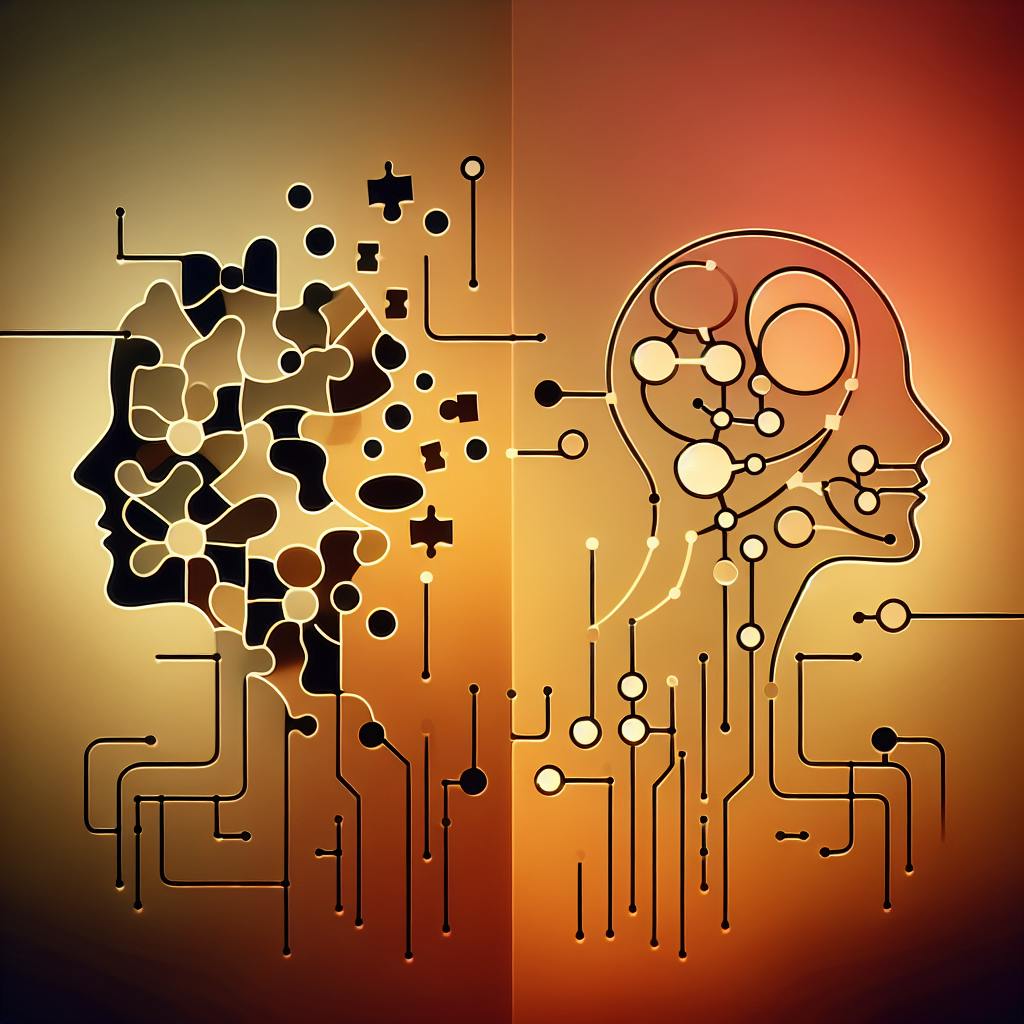Introduction: The Rise of AI in Education
Artificial intelligence (AI) is advancing rapidly, transforming industries from transportation to healthcare. As AI integrates deeper across society, fluency is crucial for students to ethically participate and lead in an AI-powered world.
However, complex prerequisites like advanced math and coding often exclude newcomers from engaging with AI. This beginner's guide aims to make AI more accessible through hands-on projects with simplified explanations of key concepts.
We'll explore fun ideas like building chatbots, training image classifiers, even crafting music with AI. By learning AI through creating, you can gain intuitive literacy while unlocking creative potential. Useful resources like the All GPTs Directory provide customizable AI assistants to further enhance student projects.
Demand for AI skills continues rising significantly. By gaining foundations through coding projects for applications like computer vision and natural language processing, students equip themselves with core competencies for emerging roles.
Defining Artificial Intelligence
Simply put, AI is technology that exhibits human-like intelligence. But it encompasses a range of techniques:
- Machine learning algorithms automatically improve at tasks through data patterns without explicit programming
- Deep learning models like neural networks loosely simulate the brain's interconnectivity
- Natural language processing (NLP) aims to understand and generate human language
You likely already use AI when you chat with Siri or get movie recommendations. Compare this to human intelligence - we also perceive patterns to interpret information and make decisions intuitively.
Key differences lie in scope, adaptability and reasoning. But AI has made remarkable progress, with increasing potential to transform education.
Getting Started With AI Projects
The best way to learn AI is to build projects with simplified code as you strengthen foundations. Useful starter languages include:
- Python: Leading choice for AI programming with extensive libraries
- LISP: Origins in AI and excellent for testing ideas quickly
We'll focus on Python given its versatility and approachability. You can use Jupyter notebooks that mix code, visualizations and text explanations.
While complex math arises in AI, don't let it initially deter you. Start with understandable code then increase mathematical depth over time. You'll be amazed at what you can prototype with basic linear algebra and statistics!
Let your interests guide projects, iterating on templates toward original ideas. Soon you'll make creative connections between techniques and applications.
Image Recognition Projects
Image recognition allows AI systems to identify, classify and react to visual inputs, with applications from autonomous cars to facial recognition.
While traditional code explicitly outlines analysis rules, modern AI techniques train on labeled example data instead. Given photos of cats and dogs, an algorithm can learn patterns to classify new images correctly without coded rules.
Let's explore building an image classifier to distinguish cat versus dog photos using Python and TensorFlow, a popular machine learning framework used across industry.
First we'll feed our model labeled cat and dog images to automatically tune its internal neuron-like connections based on visual patterns. We'll add layers and tweak training hyperparameters like learning rate to improve accuracy.
Then we can apply the classifier to label new photos or use it in creative projects like generating art exhibiting cat/dog features. By retraining on new categories, the possibilities are endless!
Natural Language Processing Projects
Natural language processing (NLP) aims to parse, understand and generate written or spoken languages. This powers applications like search, translation, speech recognition and dialogue agents.
We intuitively adjust our communication style based on context, even steering conversations with relevant questions and responses. NLP models attempt to emulate such interactive language understanding.
Let's build a simple chatbot showing this in action! We'll code conversation templates for common social behaviors: greetings, humor, asking user details etc. By combining dynamic responses using NLP principles, our bot can have unique exchanges.
We can advance this by adding sentiment analysis - if a user says "Hello!", our bot can detect the emotion and reply "Why hello there! Lovely weather today." This mixes templates and real-time input processing.
Soon we could enhance it further to give personalized, trainable responses based on dialog data related to the user's interests. Hands-on NLP projects build strong intuition rapidly!
Reinforcement Learning Projects
Reinforcement learning involves goal-driven learning from dynamic experiences. Agents interactively make decisions while optimizing rewards from the environment. Consider teaching a video game bot through trial-and-error gameplay.
This engages core AI challenges like credit assignment (determining causation) and balancing exploration/exploitation tradeoffs. Autonomous systems like self-driving cars similarly learn driving policies from simulations modeling road scenarios.
Let's code a simple gridworld game where an AI bot attempts to collect coins while avoiding traps. We'll use libraries like Ray RLlib to implement tabular Q-learning: updating state/action rewards based on real-time gameplay.
Our bot will initially stumble randomly. But by tuning hyperparameters like learning rate and discount factor, it will increasingly favor more rewarding actions - cleverly navigating towards coins!
We can build on this with cooler environments like custom Atari game bots. The applications also extend to industrial systems like optimizing warehousing throughput.
Tools and Resources for Advancing AI Projects
While coding entire machine learning pipelines from scratch is educational, it's often unnecessary. Leverage existing frameworks, datasets and communities to accelerate your AI journey!
Python Libraries and Frameworks
Many trusted tools lower barriers for AI exploration:
- TensorFlow and PyTorch: Leading deep learning frameworks
- Keras: Simplifies TensorFlow models
- scikit-learn: General machine learning toolbox
- NLTK: Natural language toolkit for text
- OpenCV: Computer vision for images/video
Helpful Data Sources
Quality labeled data is critical for training AI models. Useful sources:
- ImageNet and CIFAR: Standard vision datasets
- Project Gutenberg: Text corpora
- Kaggle: Diverse public datasets
- Web scraping: Custom niche datasets
Code Templates and Examples
Leverage existing work to avoid reinventing the wheel:
- GitHub: Shared Jupyter notebook projects
- Kaggle Kernels and Google Colab: Cloud-hosted code
- Education sites like TensorFlow Workshops
- Quickstart models from libraries
AI Communities
Discuss ideas, troubleshoot issues and stay motivated by engaging AI communities:
- Reddit: Subreddits like r/learnmachinelearning
- Stack Overflow: Q&A site
- Slack/Discord: Groups like ODSC and AI Saturdays
- Forums: Keras Discuss, FastAI, etc.
Simplifying Complex Concepts
Initially, AI terminology and math notation can overwhelm newcomers. But the essence of techniques become intuitive through coding projects.
Interpreting Key AI Building Blocks
The fundamental elements powering AI projects have understandable interpretations:
- Loss functions: The "goal" for models to optimize
- Neural networks: Interconnected layers inspired by the brain
- Support vector machines: Classifiers based on clear decision boundaries
Stepping Towards Complexity Gradually
Rather than introducing all concepts simultaneously, layer techniques to incrementally grow skills:
- Guide from simplified code to advanced frameworks
- Slow dataset progression from MNIST digits to real-world images
- Master basic models first before optimizations
Cultivating an AI Growth Mindset
Embrace coding as an iterative art requiring patience and persistence:
- Overnight success is rare; small consistent progress pays off
- Debugging and reworking is part of the process
- Connecting concepts builds personal interest and motivation
- As your toolkit grows, increase depth on topics of passion
Conclusion and Next Steps
I hope this beginner's guide demystified AI complexity while revealing creative potential through hands-on projects. Continue exploring domains matching your interests via online courses, books and communities!
Maybe you'll build autonomous robots, generate art via ML, or create VR worlds infused with AI. By incrementally growing your skills, you can craft fascinating AI-powered experiences.
Now it's time to start your first AI project! Let your creativity guide you as you iteratively learn through building.


